Masks, sculptures, figurines
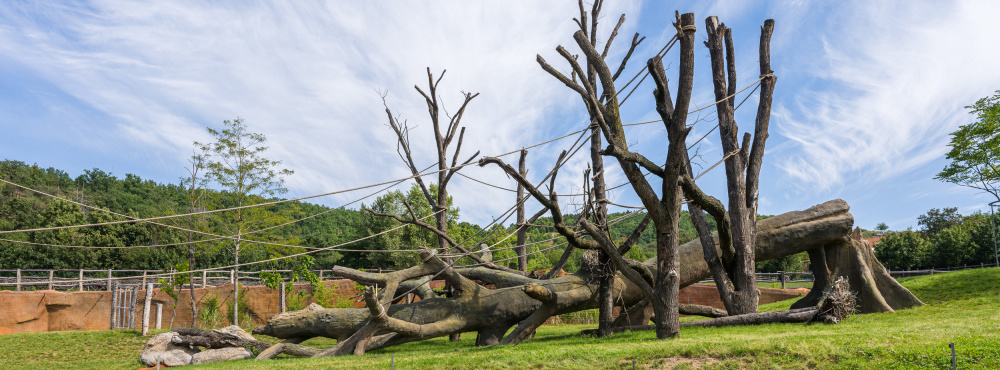
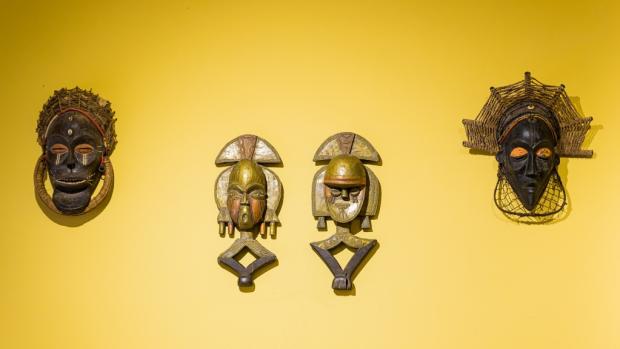 Masks in the wall of the souvenir shop in the Dja Reserve pavilion. Photo: Petr Hamerník, Prague Zoo
Masks in the wall of the souvenir shop in the Dja Reserve pavilion. Photo: Petr Hamerník, Prague Zoo
The souvenir shop, located by the pavilion exit, is adorned with Cameroonian masks and sculptures.
Both the masks and the sculptures look very authentic and ancient, but we mustn’t assume they were ever actually used in African ceremonies. They were created for tourists and decoration by contemporary carvers, which in no way diminishes their aesthetic value.
Acquiring them was fairly straightforward. Over the years of travelling to Cameroon, we have got to know local dealers in “antiques”, and one of them brought his entire collection to our hotel—all we had to do was choose. Far more difficult was the legal export of these pieces; every item was checked and approved by ministry officials.
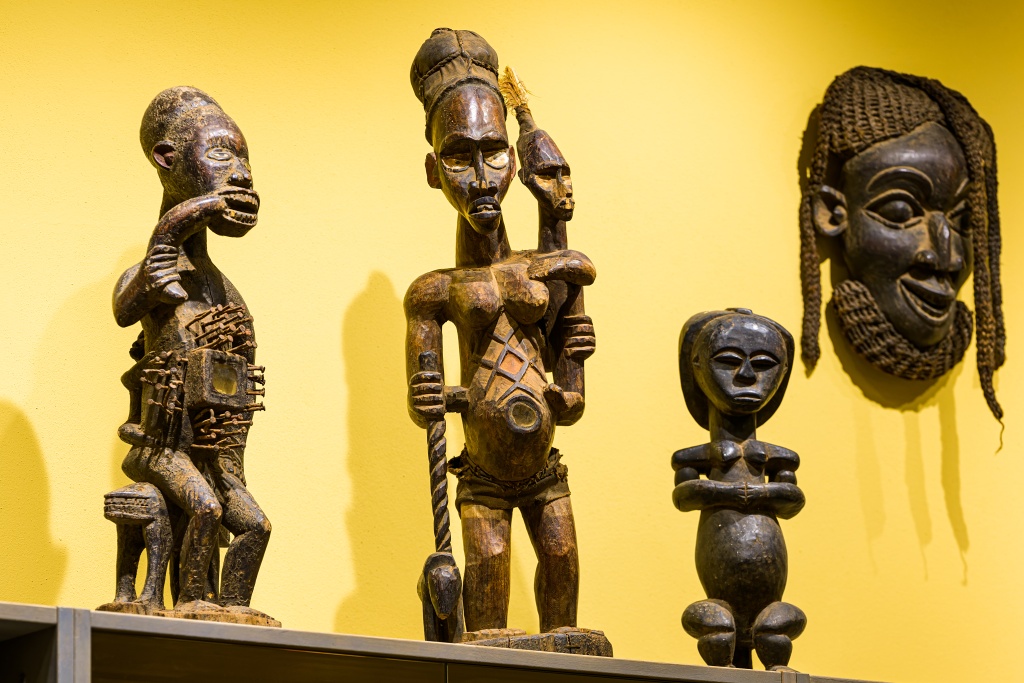
Some of the figurines in the Dja Reserve souvenir shop. Photo: Petr Hamerník, Prague Zoo
The power and beauty of African masks
African masks are inextricably linked to traditional “African art”. Although their aesthetic qualities have profoundly influenced European modern art—inspiring figures such as Pablo Picasso and Henri Matisse—in their original context they go far beyond the definition of mere artworks.
Today, the vast majority of these items are produced for tourists, becoming decorative pieces in people’s homes and offices. Even those that were taken to Europe during the colonial period at the beginning of the 20th century have been relegated to mere collector’s items or exotic museum exhibits.
Yet the masks collected directly from villages of indigenous peoples were originally part of entire ritual costumes. Wild raffia fibres, often attached around their edges, formed extravagant beards or whole garments. Masks were more than decoration—they were sacred tools that facilitated contact with supernatural forces and ancestral spirits. Brought to life through ritual dances and chants, they weren’t merely worn; their wearers would enter a trance and take on the identity of the spirit represented.
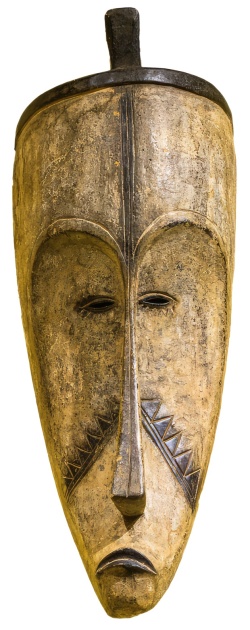
Members of the secret Ngil brotherhood lived among the Fang people and used elongated masks that were traditionally whitewashed with kaolin. These lent their wearers the power to hunt down wrongdoers and punish them for breaking tribal rules. Their intimidating appearance was augmented by wildly bristling fibres from the raffia palm. The white colour symbolised death and the spirit world. Photo: Petr Hamerník, Prague Zoo
Ancestor worship
The shapes and proportions of masks and sculptures reflect the traditions of each ethnic group. Masks depicted stylised human and animal features. Among some peoples—especially those where female ancestors were venerated—the tradition of carving idealised female faces emerged.
For African peoples, the enduring connection between the living and the world of spirits remains an important part of their lives, and many ancestor-worship ceremonies continue to be performed in full splendour—complete with ritual costumes. It is not unusual to see a dancer wearing a traditional mask alongside someone sporting a rubber mask resembling one from the Hollywood horror film Scream. Traditional practices may mix with Western pop culture, but the underlying purpose endures. Even today, young African artists draw inspiration from their heritage, creating new masks modelled on ancestral designs.
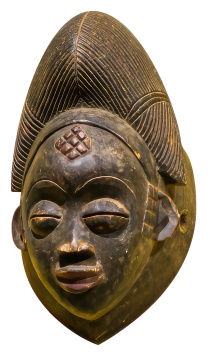
Masks for the okuyi ritual typically had the faces painted white. Originally carved by artists from tribes living in what is now Gabon, they represented the spirit of a woman, yet they were worn by men during initiation, funeral ceremonies or ancestral festivals. Photo: Petr Hamerník, Prague Zoo
Powerful statuettes
Our collection also includes figures known as nail fetishes. The Kongo people would drive nails into these statues to seal an oath or to awaken the protective powers of the sculpture—to fend off enemies or mete out justice. Known as Nkisi Nkondi (which can be translated as “hunter spirit”), these figures were believed to house a spirit that could be roused by hammering in a nail. Within the statue there was usually a cavity containing magical substances to enhance its power, often sealed with a shell or, more recently, a small mirror.
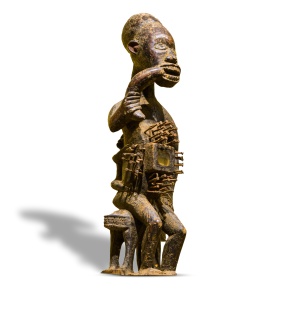
Nkisi n’kondi. Kongo people’s nail fetish. Photo: Petr Hamerník, Prague Zoo
The origin of masks
The different types of African masks cannot be confined to one particular region. Tribes interacted with one another and shaped one another’s traditions. Today, mask-making is influenced by the expectations of tourists and collectors of ethnic art, as well as by Western trends. Nevertheless, masks continue to serve as a reminder of African ethnic identities and their deep connections to their ancestors and the natural world that sustained them.
ZOOPRAHA.CZ
Contacts
- The Prague zoological garden
U Trojskeho zamku 120/3
171 00 Praha 7
Phone.: (+420) 296 112 230 (public relations department)
e-mail: zoopraha@zoopraha.cz
Others










